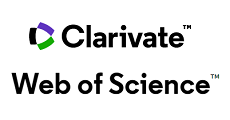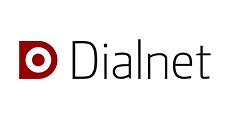Los residuos sólidos industriales peligrosos en Bogotá
Los residuos sólidos provienen de diversas fuentes: doméstica, comercial, institucional, industrial, barrido de calles y limpieza de áreas públicas. Por sus características y composición, los residuos sólidos industriales, y especialmente los clasificados como peligrosos, requieren un manejo técnico y adecuado durante su almacenamiento, recolección, transporte, tratamiento y disposición final, para controlar el riesgo que presentan de causar daño a los seres vivos y al ambiente en general.
References
CETESB/ACETESB, “Residuos sólidos industriales", Sao Paulo, agosto 1985.
EPA, Environmental Protection Agency, “Assessment of industrial hazardous, waste practice special machinery manufacturing industries”, Wapora, Inc. Washington, D.C. marzo 1977.
EPA, Environmental Protection Agency, “Disposal of hazardous wastes, U.S. Report to congress”, Publication SW-115, Washington, D.C., 1974.
Haddad, José Felicio, “El problema de los residuos sólidos peligrosos en Brasil”. Taller internacional sobre el manejo de los residuos sólidos peligrosos, Cali, Colombia, agosto de 1986.
Kunitoshi, Sakurai, “El problema de los residuos sólidos peligrosos y su manejo en el Japón”, Agencia de cooperación internacional del Japón, marzo 1972.
Sutter, Hans, Hazardous waste management in ecological sensitive industries, Berlin, january 1987.
How to Cite
APA
ACM
ACS
ABNT
Chicago
Harvard
IEEE
MLA
Turabian
Vancouver
Download Citation
License
Copyright (c) 1990 Héctor Collazos P., Cielo De Castro, Marcelo Riveros R., Alejandro Ospina T.

This work is licensed under a Creative Commons Attribution 4.0 International License.
The authors or holders of the copyright for each article hereby confer exclusive, limited and free authorization on the Universidad Nacional de Colombia's journal Ingeniería e Investigación concerning the aforementioned article which, once it has been evaluated and approved, will be submitted for publication, in line with the following items:
1. The version which has been corrected according to the evaluators' suggestions will be remitted and it will be made clear whether the aforementioned article is an unedited document regarding which the rights to be authorized are held and total responsibility will be assumed by the authors for the content of the work being submitted to Ingeniería e Investigación, the Universidad Nacional de Colombia and third-parties;
2. The authorization conferred on the journal will come into force from the date on which it is included in the respective volume and issue of Ingeniería e Investigación in the Open Journal Systems and on the journal's main page (https://revistas.unal.edu.co/index.php/ingeinv), as well as in different databases and indices in which the publication is indexed;
3. The authors authorize the Universidad Nacional de Colombia's journal Ingeniería e Investigación to publish the document in whatever required format (printed, digital, electronic or whatsoever known or yet to be discovered form) and authorize Ingeniería e Investigación to include the work in any indices and/or search engines deemed necessary for promoting its diffusion;
4. The authors accept that such authorization is given free of charge and they, therefore, waive any right to receive remuneration from the publication, distribution, public communication and any use whatsoever referred to in the terms of this authorization.



























